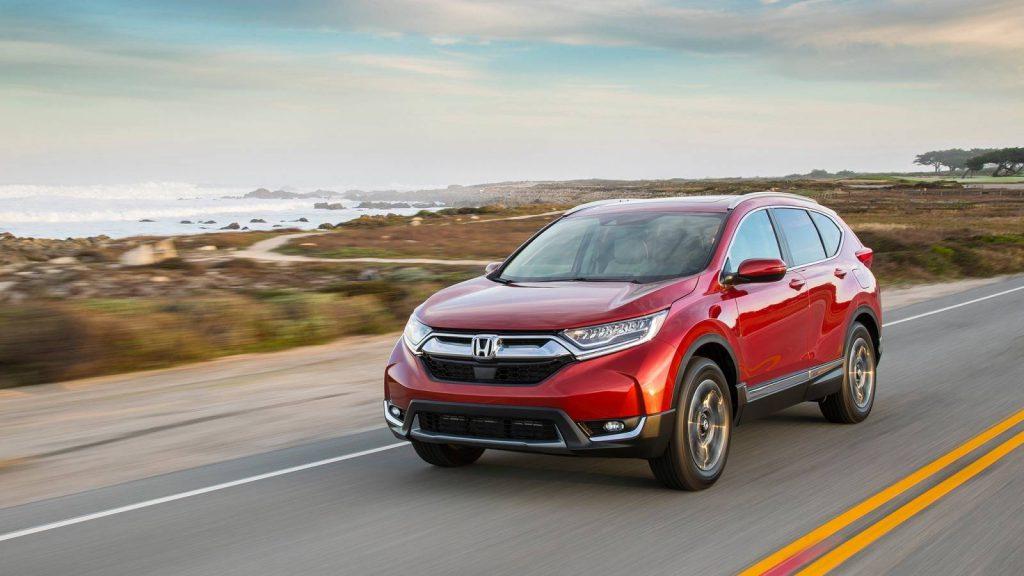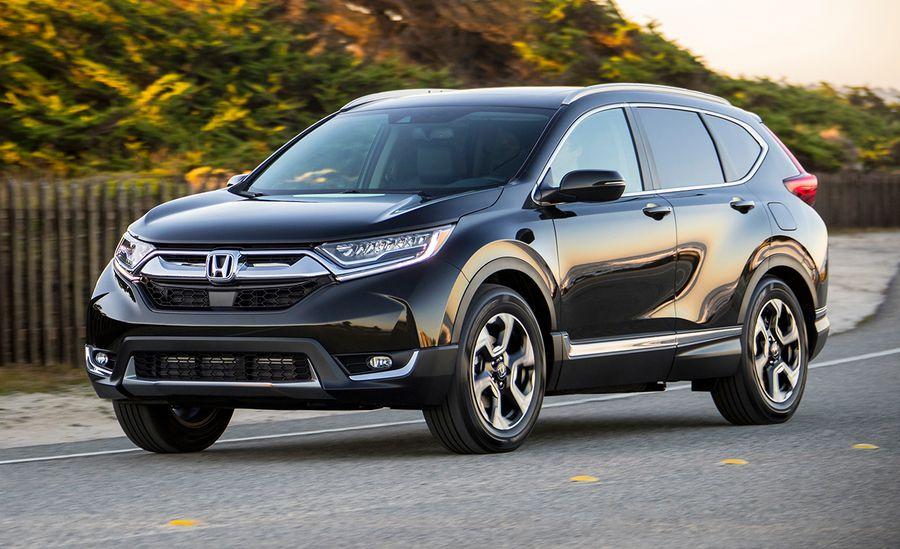Honda CRV 2018 Vs 2017: Is There Any Real Difference?
Is there any difference between Honda CRV 2018 vs 2017? Which one shall you purchase since the new model has a higher price tag? Does the extra money offer something exciting and worthwhile? Let’s delve into the 2017 Honda CRV vs 2018 Honda CRV comparison to find out which one you should put your money on.
Honda CRV 2018 Vs 2017: The Changes And Differences
The launch of the latest 5th-gen stirred excitement among the motorheads because of the possibility of releasing a hybrid version. Apart from that, there are no major 2018 Honda CRV changes.
Before jumping into an in-depth comparison between Honda CRV 2018 vs 2017, you should know that both models look good and are rich with interior and technical features. CRV is the best-selling model in the Honda lineup and these two versions are packed with value to retain that legacy.
The Exterior
If you compare the countenance of the 2017 CRV vs 2018 CRV, you won’t find any notable changes. Except for the chrome ornament around the front fog lamp, the two versions are almost the same and they are available in 10 exterior paint color options.
It happens because the CRV received a complete makeover for the 2017 model year.

However, the 2018 CRV has some chrome grillwork here and there. It is merely for cosmetic purposes and to keep up with the industry’s strange fixation on chrome decoration.
The use of LEDs for the turn signals, taillights, and daytime running lights also differs from the 2018 version from the 2017 model. You can also choose the optional full-LED headlight clusters in the latest version.
The Interior & Cargo Capacity
Again, there is no significant difference between 2017 and 2018 Honda CRV when it comes to interior features.
The 2017 model is completely different from its predecessors due to the complete redesign but the 2018 model shares all the features that the previous version has.
The CRV is a compact crossover but the interior has generous space, providing comfortable seating arrangements for five people.
The 39.2 cubic feet (75.8 cubic feet with folding rear seats) cargo capacity is gigantic, allowing you to haul anything you want. There is more rear legroom than the previous CR V models, which is a relief for tall passengers.
In terms of amenities, both versions are a twin of each other. Their upper trim levels have some premium touches like heated mirrors, leather details, rain-sensing windshield wipers, and more.
The upgraded dashboard is impressive with the instrument cluster and a touchscreen having an actual volume knob. Whether you are considering Honda CRV 2018 vs 2017, both can beat a midsize SUV in terms of interior and cargo space.
SEE MORE
- A Breakdown of the Longevity of Honda Civics
- A Side by Side Comparison of Honda CR-V and Nissan Rogue
Technical Features
Again, there is no real difference between these two models. Both are rich with safety and entertainment features.
Except for the base LX trim, all versions of the models are equipped with a 7-inch touchscreen with the facility of Android Auto and Apple CarPlay. They also have a high-quality sound system, satellite navigation, and more.
The Sensing Safety package is standard for these models. All versions have adaptive cruise control, collision mitigation braking system, lane keeping assist system, road departure mitigation system, and more.
The 2018 model has rear parking sensors that help drivers to do rear parking easily.
Performance & Mileage
The 2017 and 2018 CRV models project similar performance with their two engine choices – the standard 2.4L I4 engine produces 180 lb-ft torque and 184 horsepower while the 1.5L turbocharged I4 version boosts the horsepower to 190.
You can go for an all-wheel-drive option if your driving routes include long stretches of mud and dirt. The all-wheel drive provides better stability in off-road conditions and wet weather.
The latest CRV comes with an overhauled suspension that increases the comfort of the passengers. Without affecting the quality of the ride and smooth driving, it cuts the chance of passengers rolling in corners.

>> Buy a high-quality used car at the best deal from Japanese authorized dealers here <<
The fuel efficiency of both models is almost the same too. A 2017 version of the CRV Touring AWD will produce 26.1 mpg combined (21.9 mpg in the city and 34.2 mpg on the highway) with its 1.5L turbo-four engine.
A similar 2018 version will yield 29.7 mpg combined, with 27 mpg in the city and 33 mpg on the highway. It seems that the latest model is a bit ahead in terms of overall and city driving mileage. However, the difference is not much if you compare all the trims.
Price
The last segment in the comparison between Honda CRV 2018 vs 2017 is the price and there is nothing dramatic, like all other sections. The base LX version of the 2017 model is just shy of $25,000 while the 2018’s base version also has the same price tag.
However, the EX version of both model years offers the best value for money with upgraded safety features and a flurry of premium features. The 2017’s EX version costs around $27,600 while it is a little shy of $28,000 for the 2018 year model.
Resale Value
Both the 2018 and 2017 CRV models tend to hold their value well over time due to Honda’s reputation for durability and reliability.
However, the 2017 model may experience a slightly slower depreciation rate, making it an appealing choice for those concerned about long-term value retention.
Maintenance and Reliability
Both the 2018 and 2017 CRV models embody the essence of reliability, ensuring that owners experience minimal headaches when it comes to upkeep and repairs.
It’s a testament to Honda’s meticulous engineering and quality control that these models have stood strong in the face of everyday wear and tear.
One of the defining attributes that contributes to the enduring reliability of these vehicles is their low maintenance costs. Honda has artfully designed the CRV to be not only dependable but also cost-effective to maintain over the long haul.
This is music to the ears of discerning car owners who value a vehicle that won’t drain their pockets with frequent trips to the mechanic.
Furthermore, the real-world experiences of CRV owners serve as a resounding testament to the reliability of these models. Across various forums, reviews, and conversations, one consistent theme emerges: a high level of customer satisfaction.
Owners of both the 2018 and 2017 CRV models often sing praises about the peace of mind that comes with driving a vehicle that rarely falters.
Want to see the comparison and the 2017 advantages in detail? Check out the video below from Car Question:
FAQs on Honda CRV 2018 Vs 2017
-
Which CRV model is more fuel-efficient?
The 2018 CRV, particularly with its turbocharged engine option, generally offers slightly better fuel economy, especially on the highway.
-
Are there significant differences in cargo space between the two models?
While both models provide ample cargo space, the 2018 CRV has a slightly larger cargo area, accommodating more luggage and belongings.
-
Is the safety technology significantly improved in the 2018 CRV?
Yes, the 2018 CRV features updated safety technology, resulting in improved crash test ratings compared to the 2017 model.
-
Do the differences in price justify the upgrades in the 2018 CRV?
The upgrades and additional features in the 2018 CRV may be worth the slightly higher price for buyers seeking enhanced technology and safety.
-
Which model has better long-term value retention?
Both models tend to hold their value well, but the 2017 CRV may experience slightly slower depreciation over time.
Conclusion
In the comparison between the Honda CRV 2018 vs 2017, both models have their unique strengths and advantages. The 2018 model introduces several updates and enhancements, such as a refined exterior design, upgraded technology, and improved safety features.
On the other hand, the 2017 model offers a budget-friendly option with reliable performance and a well-established reputation. Ultimately, the choice between the two models depends on individual preferences, priorities, and budget considerations.














